| Title | Circuit dynamics of approach-avoidance conflict in humans. |
| Publication Type | Journal Article |
| Year of Publication | 2025 |
| Authors | Staveland, BR, Oberschulte, J, Kim-McManus, O, Willie, JT, Brunner, P, Dastjerdi, M, Lin, JJ, Hsu, M, Knight, RT |
| Journal | bioRxiv |
| Date Published | 2025 Jan 01 |
| ISSN | 2692-8205 |
| Abstract | Debilitating anxiety is pervasive in the modern world. Choices to approach or avoid are common in everyday life and excessive avoidance is a cardinal feature of all anxiety disorders. Here, we used intracranial EEG to define a distributed prefrontal-limbic circuit dynamics supporting approach and avoidance. Presurgical epilepsy patients (n=20) performed an approach-avoidance conflict decision-making task inspired by the arcade game Pac-Man, where participants trade-off real-time harvesting rewards with potential losses from attack. As patients approached increasing rewards and threats, we found evidence of a limbic circuit mediated by increased theta power in the hippocampus, amygdala, orbitofrontal cortex (OFC) and anterior cingulate cortex (ACC), which then drops rapidly during avoidance. Theta band connectivity between these regions increases during approach and falls during avoidance, with OFC serving as a connector in this circuit with high theta coherence across limbic regions, but also with regions outside of the limbic system, including the lateral prefrontal cortex. Importantly, the degree of OFC-driven connectivity predicts how long participants approach, with enhanced network synchronicity extending approach times. Finally, under ghost attack, the system dynamically switches to a sustained increase in high-frequency activity (70-150Hz) in the middle frontal gyrus (MFG), marking the retreat from the ghost. The results provide evidence for a distributed prefrontal-limbic circuit, mediated by theta oscillations, underlying approach-avoidance conflict. |
| DOI | 10.1101/2024.12.31.630927 |
| Alternate Journal | bioRxiv |
| PubMed ID | 39803433 |
| PubMed Central ID | PMC11722433 |
| Grant List | R01 NS021135 / NS / NINDS NIH HHS / United States U24 NS109103 / NS / NINDS NIH HHS / United States U01 NS108916 / NS / NINDS NIH HHS / United States R01 MH120194 / MH / NIMH NIH HHS / United States R01 EB026439 / EB / NIBIB NIH HHS / United States P41 EB018783 / EB / NIBIB NIH HHS / United States |

